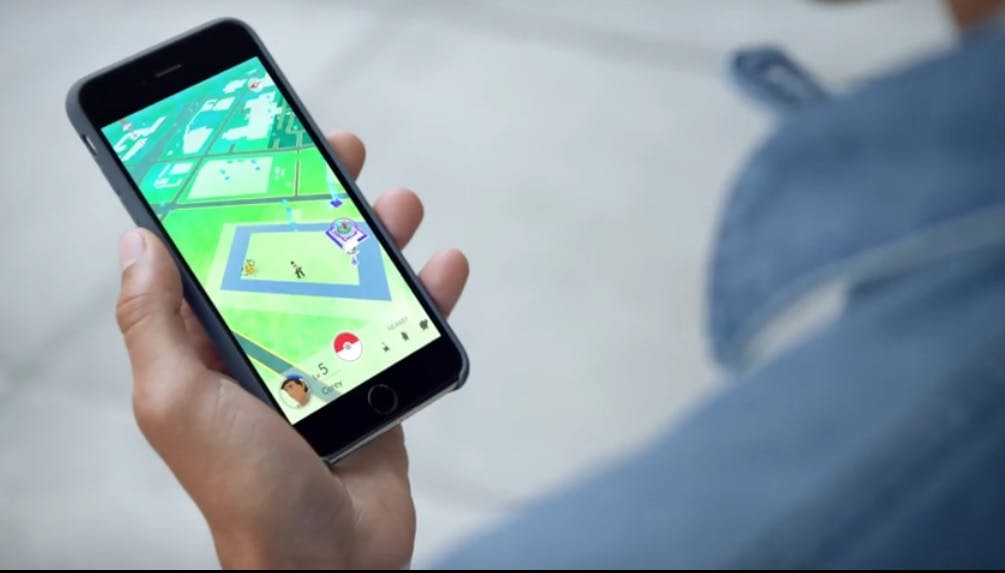This past week, I joined the 7.5 million people who downloaded the Pokémon Go mobile game and began my journey to catch all 151 original Pokémon monsters.
Pokémon Go has more downloads in its first week of existence than popular dating app Tinder has had in its entire four-year existence, and is expected to surpass Twitter’s user numbers if its growth trajectory continues.
A lot of people are augmenting their realities with a little bit of fun, but as I was busy catching a level 137 Golbat during my team meeting, I realized that there are more practical uses to the game. We can learn a lot about talent management best practices from the tasks associated with catching and training little cartoon monsters. On a quest to be the very best talent management professional? Then you should take these tips I learned while becoming a Pokémon Master:
Look in the right place to find the best talent
What makes Pokémon Go such a unique gaming experience is that players must explore and interact with their real-world surroundings in order to affect their game experience. Pokémon are categorized by “type” and each type of Pokémon has a specific habitat that they prefer to live in. In order to fulfill my Pokémon Go destiny and catch them all, I can’t just sit on my couch and see what pops up around my house (ironically, it’s a whole herd of Drowzee, a Pokémon that encourages others to sleep). Instead, I have to go to where the different Pokémon types are in the hopes of adding them to my team.
The same holds true when it comes to recruiting; you have to go to where the candidates are in order to connect with them. Understanding what types of candidates you need for certain roles, and how to best reach out to them, is a core tenement to increasing recruiter productivity. It might not be as easy as walking around a grassy field to rustle up different Pokémon, but recruiters must understand where their desired candidates congregate, and know how to quickly identify and contact engaged, highly valued candidates. Once you know how to find these candidates, create talent pools and talent pipelines so that you can move them more efficiently to fill open positions.
Train your pokémon (and your employees) the right way
Pokémon aren’t caught fully formed. A major element of Pokémon Go, as well as the original handheld Pokémon video games, involves training your Pokémon. “Training” in the game means exposing your Pokémon to battles against other trainers’ team, where battle experience raises each individual creature’s experience level. Higher-level creatures then learn new fighting moves and at times, “evolve” into completely different Pokémon. It takes diligence and a solid strategy to train each individual Pokémon through these experiential fights so that they walk away with more points and abilities – instead of an injury.
Training employees takes the same deliberate strategizing that training these animated creatures does. A good HR or learning professional will understand what an organization’s overall learning goal is, and create a program that supports individual employees’ learning goals, while also aligning to the business’ expectations. Just as training Pokémon is an ongoing process, training employees through a continuous learning program yields better results for both employees and organizations. The right technology helps both the Pokémon trainer and talent management professional; while the former might use in-game tools to boost creatures’ experience levels, the right learning management solution will enable continuous, collaborative learning to increase employee performance.
A diverse team is a winning team
In Pokémon Go, these trainer battles play out in designated locations, known as Pokémon training gyms. A winning trainer controls the gym, either helping in-game allies better train their Pokémon, or capturing a new location away from in-game rivals. However, not all Pokémon are created equal. Aside from differences in experience level and strength, those Pokémon types factor majorly into battles. Pokémon types are naturally pre-disposed to fare better against some types and struggle against others. For example, a fire-type Pokémon will have a natural advantage over a grass-dwelling Pokémon, but will struggle against a water-type Pokémon. In order to maximize the chances of success in gym battles, a wise trainer will curate and train a diverse Pokémon team.
Organizations should take the same mindset; businesses that prioritize diversity and inclusion fare better financially than those that do not. Both customers and job candidates are choosing to associate with diversity-minded organizations; in order to win more business and to equip your organization with the best talent, you must actively create a diverse team. Don’t forget that there are many types of diversity to take into consideration; race, gender, ethnicity, education backgrounds, work experiences – these are all elements that affect diversity and business performance for the better. The right technology can help organizations make diversity and inclusion initiatives a priority throughout the employee lifecycle.
Whether you’re trying to catch a Charizard or better motivate your employees, a quick spin on the Pokémon Go app could be just the inspiration you need to become the very best at what you do. And like all good trainers, you will need the right tools to help you accomplish your goals.
